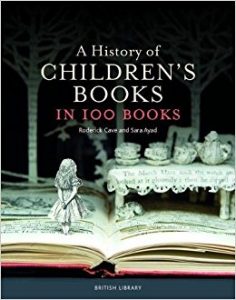
(British Library)
A splendid hardback volume, this new title from the British Library may not be what one expects at first. This is not a “best 100 children’s books ever” kind of book; rather, as Cave and Ayad mention in their introduction, as well as many favourites the book includes tomes that are indeed “interestingly bad or objectionable” . The purpose of the book is more to survey significant changes in the creating and publishing of children’s books in the last few hundred years, so books included will have been chosen for various reasons. Here, the authors aim to focus on the trade side of children’s publishing, on the book as an object as well as a cultural artifact.
I particularly like the focus from the onset that books as objects, as possessions, are so vital in childhood:
Keen readers may never (we hope) grow out of the joy they learned as infants in discovering where books could take them, but as adults they seldom as fully inhabit their books as child readers do. (6)
To Cave and Ayad, children’s books’s life “outside the printed page” is vital to its study.
Be prepared therefore that books you might expect to be included might not be. However, be prepared also to make some amazing discoveries and reminisce about books you might have actually completely forgotten about until you catch glimpse of them on the page.
This brilliant overview of children’s publishing in the last few hundred years is arranged by theme, rather than chronologically. These topics are divided in chapters, with each chapter then sub-divided again in different parts. For example, chapter 1 focuses on pre-literacy and within it you will include sub-sections on rhythmic books, ‘indestructible’ rag books (quite a bold claim to make about one’s product, but they did exist!), and touchy-feely books:
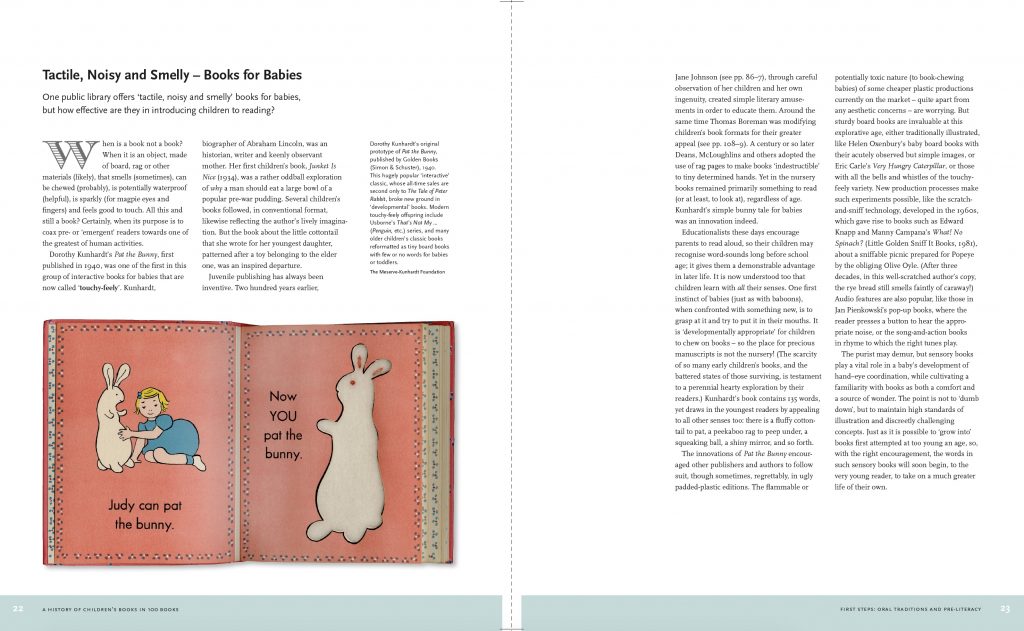
This helps readers go straight to the topics that might particularly interest them, but also allows readers to dive in and out, as most sub-sections are four pages long or shorter. Because the book is so heavily illustrated with reproductions of illustrations as well as other artifacts, I found it really enjoyable to browse through until something caught my eye. This is one of the strengths of this tome I think: it is a real fandom-type book. There is just so much in there for children’s literature enthusiasts who might be more interested in historical rather then purely academic approaches to children’s books.
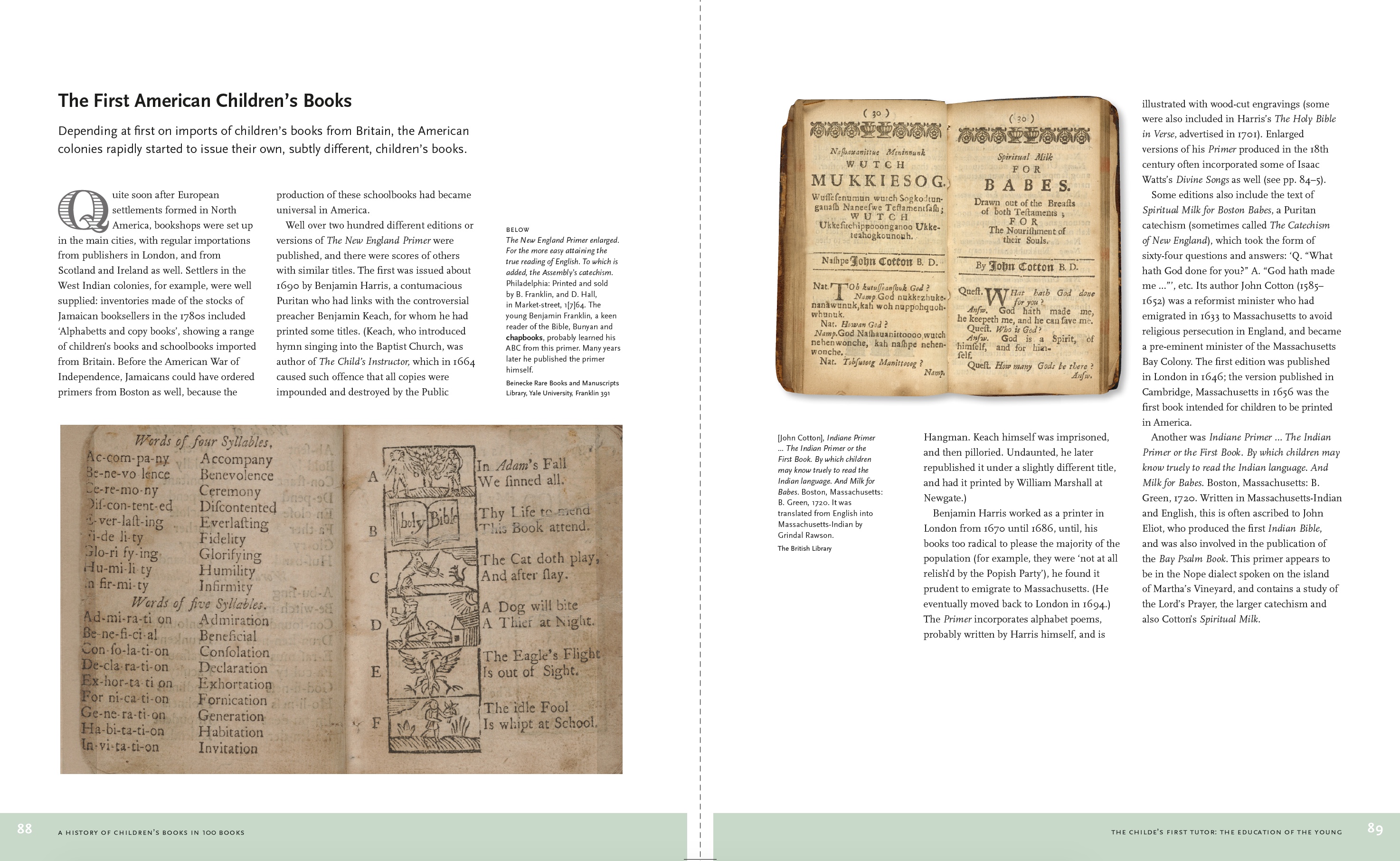
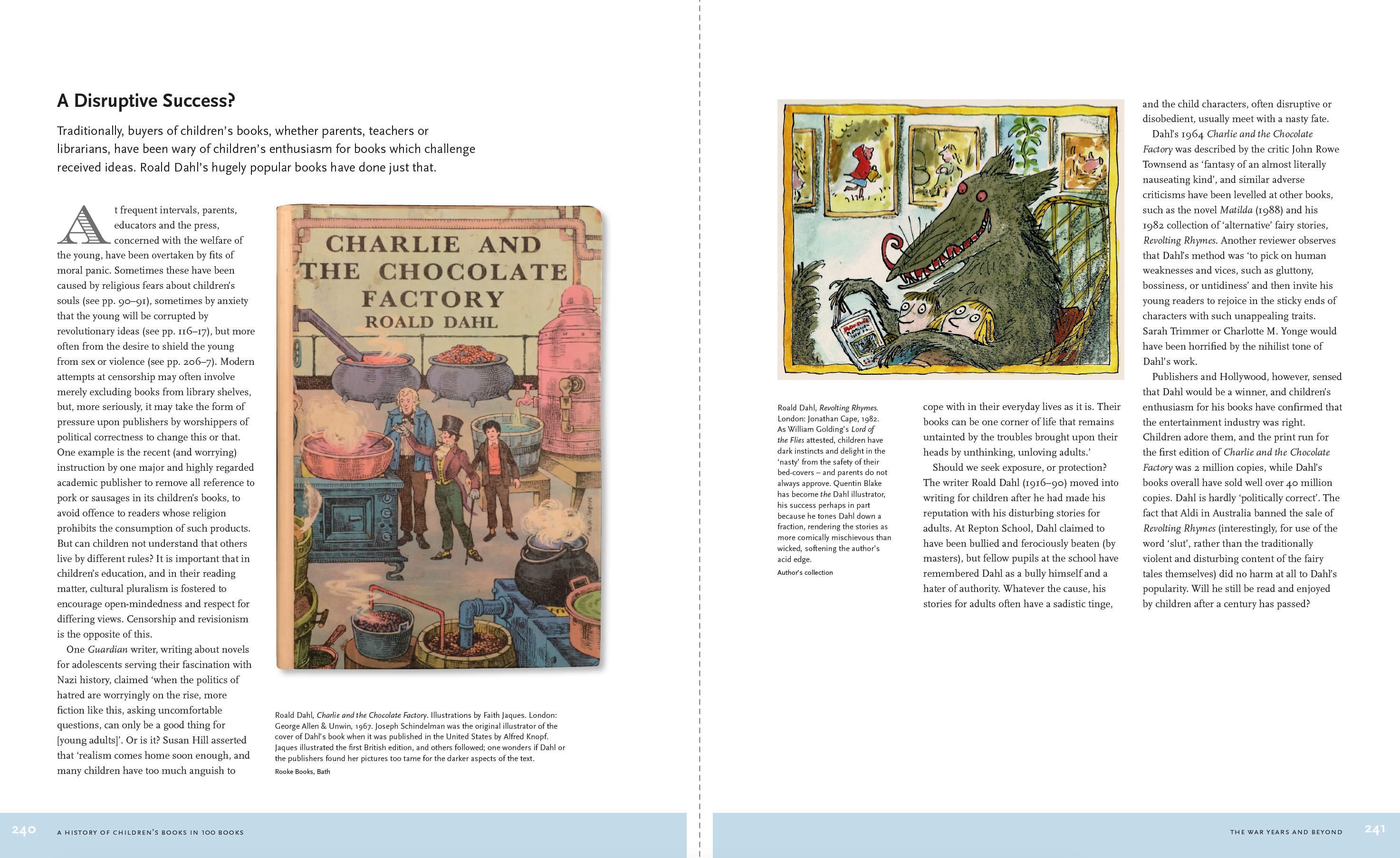
Though the focus is primarily about children’s books, other artifacts, media and subjects are included to give historical, political and sociological grounding. Literature in general and children’s literature in particular can never look at in isolation of what is happening around the world. The growing number of titles about refuges and inspiring female figures are potent recent examples of this. As the authors highlight in the introduction, their primary aim is to look at the book as a trade item as well as a cultural one, and political and economical climates are therefore hugely influential .
Such links are made throughout, and I think this is what makes this volume so fascinating. For example I did not expect to find the Obamas within its pages, yet here they are, reading Where The Wild Things Are in the White House gardens during the 2016 Easter Egg Roll, a tradition in which First Families reading books to children invited to the event (you can watch the video here if you want something to warm your heart on a cold autumn day!):
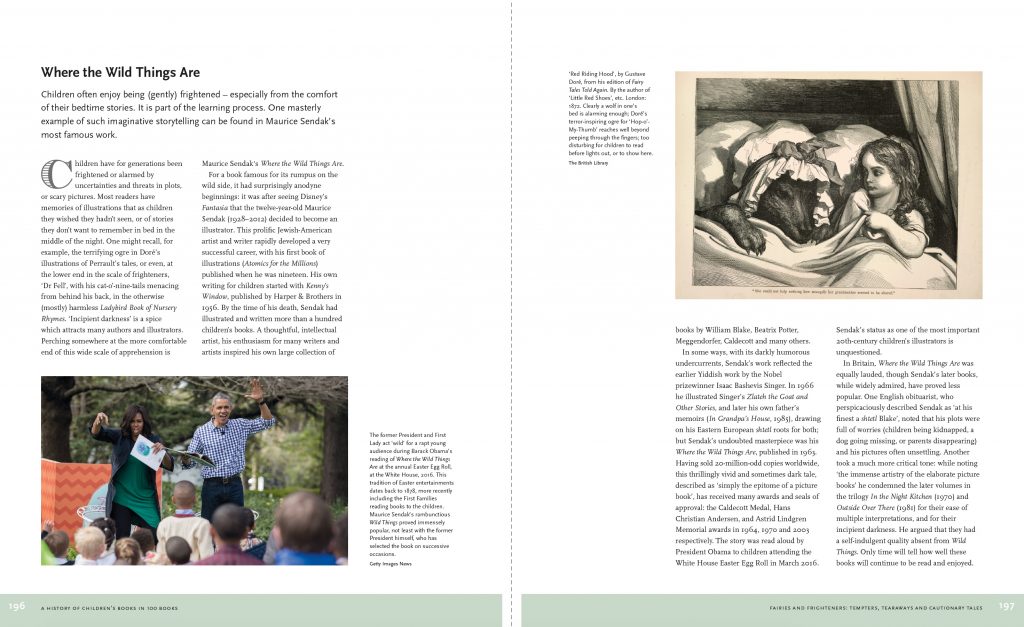
Superbly researched and presented, highly entertaining and fascinating, A History of Children’s Books in 100 Books is a real treasure trove and an absolute must for anyone with an active interest in children’s literature.
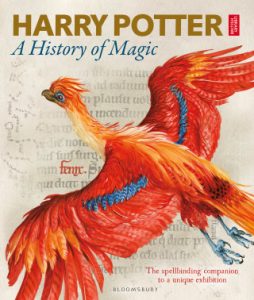
Source: review copy
